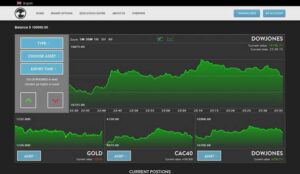Import any crypto wallet: In the rapidly evolving world of cryptocurrencies. The importance of securely managing digital assets cannot be overstated. One crucial aspect of managing cryptocurrencies is the ability to import existing wallets into new platforms or devices.
This comprehensive guide aims to provide you with the knowledge and tools necessary to successfully import any crypto wallet. Whether you are transitioning to a new wallet for improved functionality. Ugrading your hardware wallet, or simply seeking greater accessibility and convenience, understanding the process of importing wallets is essential.
By following this guide, you will gain insights into the benefits of wallet importing, how to choose the right wallet; Step-by-step instructions for importing, troubleshooting common issues, implementing best security practices, and exploring advanced features and strategies. Let’s embark on this journey to harness the power of imported crypto wallets.
A Comprehensive Guide on How to Import Any Crypto Wallet

What is Crypto Wallet Importing?
Crypto wallet importing is the process of transferring an existing cryptocurrency wallet from one software or hardware to another. It allows users to seamlessly switch between different wallets without losing their funds or private keys.
Why Importing a Crypto Wallet is Important
Importing a crypto wallet is crucial for those who want to consolidate their funds or transition to a different wallet for various reasons. It ensures that you retain control of your private keys and have easy access to your cryptocurrencies, making it a convenient and secure option for managing your digital assets.
Understanding the Benefits To Import any Crypto Wallet
Enhanced Accessibility and Convenience
By importing your crypto wallet, you can access your funds from different devices or platforms, providing greater accessibility and convenience. Whether you prefer using a desktop, mobile, or hardware wallet, importing ensures that your funds are easily accessible whenever and wherever you need them.
Seamless Transition between Wallets
Importing your crypto wallet allows for a smooth transition between different wallets. Whether you’re switching from one software wallet to another or upgrading to a more secure hardware wallet, importing ensures that you don’t lose any funds or face any interruptions in managing your cryptocurrencies.
Maintaining Control of Private Keys
One of the critical benefits of wallet importing is that it allows you to retain control of your private keys. Your private keys are your keys to accessing and managing your cryptocurrencies. By importing your wallet, you can continue to have sole control over your private keys, enhancing the security and ownership of your digital assets.
Choosing the Right Cryptocurrency Wallet for Importing
Types of Crypto Wallets
When choosing a wallet for importing, you have several options to consider. Software wallets, such as desktop and mobile wallets, offer convenience, while hardware wallets provide enhanced security. You can also opt for online wallets or even paper wallets, depending on your preferences and needs.
Factors to Consider before you import any crypto wallet.
When selecting a wallet for importing, consider factors like security features, user-friendliness, compatibility with your preferred cryptocurrencies, and the availability of customer support. It’s crucial to choose a wallet that aligns with your requirements and provides a seamless importing process.
Recommended Wallets for Importing
Some popular DeFi wallets that support importing include Exodus, Ledger Nano S, Trezor, and MyEtherWallet. These wallets offer user-friendly interfaces, strong security features, and support for a wide range of cryptocurrencies, making them ideal choices for importing your crypto wallet.
Step-by-Step Guide on Importing a Crypto Wallet
1. Preparing for Wallet Importing
Before importing your wallet, ensure that you have a backup of your private keys or recovery phrase. This backup will be essential in case anything goes wrong during the importing process. Additionally, make sure to download and install the necessary wallet software or ensure that your hardware wallet is ready for use.
2. Importing Wallet on Specific Wallet Software
Different wallet software may have varying import processes. Typically, you’ll need to locate the import option within your wallet software and follow the instructions provided. This often involves entering your private keys or recovery phrase to initiate the importing process. The software will then synchronize with the blockchain to retrieve your funds and transaction history.
Importing Wallet on Hardware Wallets
To import your wallet on a hardware wallet, connect the device to your computer or mobile device and open the associated wallet software. Within the software, search for the option to import an existing wallet.
Follow the instructions provided, which may involve entering your private keys or utilizing the recovery phrase. The hardware wallet will then establish a secure connection and synchronize with the blockchain to retrieve your funds.
4. Importing Wallet on Mobile Wallet Apps
For mobile wallet apps, the importing process may vary depending on the app you are using. Generally, you will need to locate the import option within the settings or account options of the app. Enter your private keys or recovery phrase as instructed, and the app will synchronize with the blockchain to import your wallet, giving you access to your funds on your mobile device.
Now that you have a comprehensive understanding of wallet importing, choosing the right wallet, and the step-by-step process, you can easily make the switch and manage your cryptocurrencies with ease and confidence. Remember to stay cautious and keep your private keys secure to protect your valuable digital assets. Happy importing!
Troubleshooting Common Issues During Wallet Importing
Incorrect Password or Seed Phrase
You know that sinking feeling when you’re sure you’ve typed in your password correctly, but the wallet just won’t let you in? Don’t panic just yet! One of the most common issues during wallet importing is an incorrect password or seed phrase. Before you start questioning your memory, take a deep breath and double-check that you’ve entered everything accurately.
Sometimes, it’s just a typo that’s causing the trouble. If that doesn’t work, try accessing your account through a different device or wallet software. And if all else fails, don’t hesitate to reach out to the wallet’s support team for assistance. They’ve seen it all, and they’ll help you get back on track faster than you can say “crypto conundrum.”
Wallet Compatibility Issues
Crypto wallets, like humans, don’t always play well with each other. It’s like trying to fit a round peg into a square hole – it’s just not going to work. So, if you’re trying to import your wallet into a new software or device and it’s just not cooperating, compatibility could be the culprit.
Different wallets have different formats and support various cryptocurrencies, so make sure your wallet is compatible with the software or device you’re trying to transfer it to. This might involve some research and reading of nerd speak, but hey, you didn’t get into crypto to avoid a challenge, did you?
Network Connection Problems
Ah, the joys of modern technology! Sometimes, despite our best efforts, network connections can be as reliable as a politician’s promises. If you’re experiencing issues while importing your wallet, it might be due to poor internet connectivity. Before you throw your computer out the window, try switching to a different network or ensuring a stable connection.
You don’t want to risk losing access to your precious crypto just because your Wi-Fi decided to go on a coffee break. So, make sure you’re surfing the web on a solid connection, and you’ll be back to importing your wallet like a pro.
Best Practices for Ensuring the Security after Import any Wallets
6.1 Creating Strong Passwords and PINs
Let’s face it, creating a password that even a hacker would struggle with isn’t the most thrilling part of the crypto journey. But hey, it’s like wearing a helmet while riding a bike – it’s a hassle, but it keeps your noggin safe.
When importing your wallet, be sure to create a strong and unique password that’s a combination of numbers, letters, and special characters. And while you’re at it, set up a PIN code as an extra layer of security. Trust us, a little inconvenience during the login process is well worth the peace of mind in knowing your crypto is under lock and key.
Enabling Two-Factor Authentication
You may think you’re clever, but hackers can be pretty crafty too. Two-factor authentication (2FA) is like having an extra bouncer at the entrance of your crypto club – it adds an extra layer of protection against unwanted guests.
By enabling 2FA, you’ll be asked to provide a second form of verification, typically through an app on your phone or an email code, whenever you log in. It may feel a tad bit annoying at times, but let’s be real: no pain, no gain, right? So, show those hackers that your crypto party is for VIPs only!
Regularly Updating Wallet Software and Firmware
If you’re still rocking that vintage wallet software from 2015, it might be time for an upgrade. Just like you wouldn’t trust a rusty old car with a cross-country road trip, you shouldn’t trust outdated wallet software with your valuable crypto assets.
Regularly updating your wallet software and firmware ensures you have the latest security patches and bug fixes. Think of it as doing some spring cleaning for your digital assets – it keeps everything running smoothly and adds an extra layer of protection against potential vulnerabilities. So, put on your IT hat and hit that update button!
Exploring Advanced Features and Strategies for Imported Wallets
Utilizing Multi-Signature Wallets
If you’re ready to step up your crypto game, consider diving into the world of multi-signature wallets. It’s like having a team of superheroes guarding your crypto fortress. With multi-signature wallets, multiple private keys are required to access your funds, making it harder for any single person to compromise security.
So, gather your most trusted allies and enable this feature to give your crypto assets a boost in protection. Just remember, with great power comes great responsibility, so make sure you keep a backup of all those private keys!
Integrating Imported Wallets with DeFi Platforms
Looking to take your crypto investments to the next level? DeFi (Decentralized Finance) platforms might be your golden ticket. By integrating your imported wallet with DeFi platforms, you can lend, borrow, and earn interest on your crypto assets.
It’s like putting your money to work while you sip margaritas on the beach. Just be sure to do your research, understand the risks involved, and only use reputable platforms. After all, you don’t want to see your hard-earned crypto disappear faster than a magician’s rabbit!
Diversifying Assets and Managing Portfolio
Sticking to just one crypto asset is like eating the same meal every day – it gets boring, and you might be missing out on some delicious opportunities. By importing your wallet, you have the power to diversify your crypto portfolio and explore different assets and projects.
Spread your investments like butter on toast and watch your portfolio grow like a well-nurtured garden. However, always remember to do your due diligence, never invest more than you can afford to lose, and embrace the rollercoaster ride that is the crypto market!
Conclusion: Harnessing the power to import any crypto wallet
Importing a crypto wallet can sometimes feel like entering a labyrinth of tech jargon and troubleshooting nightmares. But fear not, intrepid crypto adventurer! We’ve covered the most common issues, we’ve fortified your security fortress, and we’ve even unlocked the door to advanced features and strategies.
Now it’s up to you to harness the power of imported crypto wallets and navigate the exciting world of decentralized finance. So go forth, my friend, and may the crypto odds be ever in your favor!
Conclusion: Harnessing the Power of Imported Crypto Wallets
In conclusion, importing a crypto wallet opens up a world of possibilities for securely managing and accessing your digital assets. By following the steps outlined in this comprehensive guide, you can seamlessly transition between wallets, maintain control of your private keys, and enjoy enhanced convenience and accessibility.
Remember to choose the right wallet for your needs, implement best security practices, and stay up-to-date with the latest advancements in wallet technology. With a well-imported wallet, you can confidently navigate the ever-expanding crypto landscape and make the most out of your digital investments. Start importing your crypto wallet today and unlock the full potential of your cryptocurrency journey.
FAQ on import any crypto wallet
1. Can I import a wallet from one cryptocurrency to another?
Wallet importing typically involves transferring a wallet from one platform or device to another within the same cryptocurrency ecosystem. It is not possible to directly import a wallet from one cryptocurrency to another. However, you can sell your assets in one cryptocurrency, transfer the funds to a wallet compatible with the desired cryptocurrency, and then import that wallet.
2. Will importing a wallet affect my existing funds and transactions?
No, importing a wallet does not affect your existing funds or transactions. It simply allows you to access and manage your funds from a new platform or device. Your funds and transaction history remain intact, and you will be able to continue conducting transactions as usual.
3. What happens if I forget my wallet’s password or seed phrase?
Forgetting your wallet’s password or seed phrase can be a serious issue as it may result in permanent loss of access to your funds. It is crucial to keep your wallet information secure and back up your seed phrase in a safe place. If you forget your password or seed phrase, some wallets offer recovery options, such as account recovery through email or linking to a mobile phone number. However, it’s essential to check and follow the specific wallet’s recovery process.
4. Can I import a wallet onto multiple devices simultaneously?
While some wallets allow you to access your funds from multiple devices, it is crucial to consider the security implications. Importing a wallet onto multiple devices increases the risk of potential security breaches or unauthorized access. It is generally recommended to import your wallet onto a single trusted device and use secure backup methods to ensure the safety of your funds.





